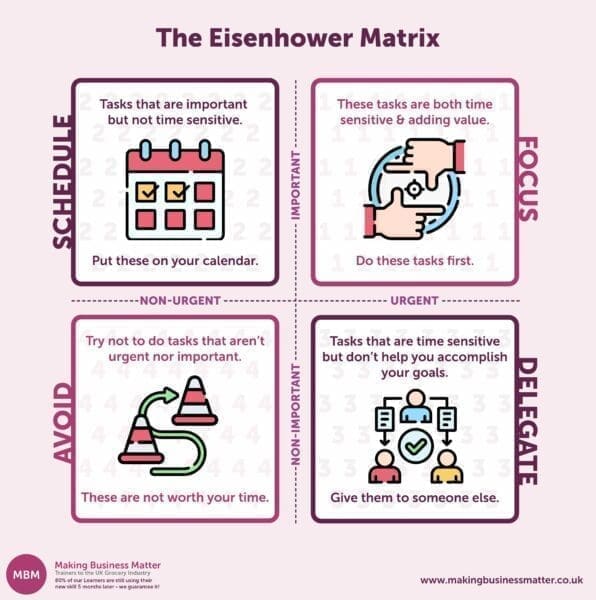Mastering Time Management With 25-minute Work Sprints and Refreshing Breaks
Time slipping away like sand through an hourglass is a common predicament in today’s fast-paced business world. When deadlines loom and productivity falters, the race against time becomes more than just a metaphor. But fear not, because there’s a secret weapon that can transform the way you tackle tasks, boost your efficiency, and liberate you from the clutches of procrastination. Enter the ‘Pomodoro Technique,’ a time management marvel that’s taking the corporate world by storm.
At its core, the Pomodoro Technique is a deceptively simple yet highly effective time management method. Born in the late 1980s, the technique’s name was inspired by the humble tomato-shaped kitchen timer. Even more, its creator, Francesco Cirillo, used this timer during his university days to focus on his studies and complete assignments.
The concept is brilliantly straightforward:
- Break work into short, focused intervals, typically 25 minutes in length, called ‘Pomodoros’ (Italian word for tomato).
- Followed by a short 5-minute break.
- After completing four Pomodoros, take a more extended break of around 15-30 minutes.
But don’t let its simplicity fool you; this unassuming technique has been scientifically proven to enhance focus, productivity, and overall work performance. By harnessing the power of timeboxing and incorporating strategic breaks, the Pomodoro Technique optimises your brain’s ability to concentrate on tasks while preventing burnout and mental fatigue.
What Are the 5 Steps in the Pomodoro Technique?

- Choose a single task to focus on. For example, gathering sources for your research paper.
- Set a timer for 25 minutes to work on the task with no distractions.
- When the alarm sounds, take a 5-minute break. Got take a walk or drink water.
- Repeat the process 1 to 3 more times.
- Take a longer 15 to 30-minute break and start again.
How the Pomodoro Technique Works
Step1:
Firstly, the Pomodoro Technique operates on the premise that sustained focus is best achieved through short bursts of intense concentration, coupled with regular breaks. When you embark on a Pomodoro session, set a specific task or project to tackle during the next 25 minutes.
Step2:
During these 25 minutes, stay fully immersed in the task, banishing distractions and interruptions. Specifically, the ticking of the timer serves as a constant reminder of the limited time available, encouraging you to maintain a sense of urgency and prevent your mind from wandering.
The concept of timeboxing lies at the core of the Pomodoro Technique, wherein you allocate a fixed, predetermined time for each Pomodoro session. All in all, this time constraint adds a sense of structure and discipline to your work, enabling you to make progress without becoming overwhelmed.
Step3:
After the initial 25-minute focus session, reward yourself with a short 5-minute break. Use this time to stretch, take a quick walk, or simply relax and recharge. These regular breaks are essential for preventing mental fatigue and maintaining peak productivity throughout the day.
Step4:
Repeat the process up to three more times.
Step5:
Beyond the individual Pomodoro sessions, the technique introduces a longer break after completing four Pomodoros. This extended break of 15 to 30 minutes allows for deeper rejuvenation and reflection. Moreover, it is an excellent opportunity to assess your progress, reevaluate priorities, and approach subsequent tasks with renewed energy.
The structured intervals not only enhance productivity but also instil a healthy work rhythm that can be sustained over prolonged periods. Also, the Pomodoro Technique’s inherent adaptability makes it suitable for various tasks and projects, allowing you to apply it to a range of activities, from focused solo work to collaborative team endeavours. All in all, by implementing the Pomodoro Technique, you’ll find yourself accomplishing more in less time, all while maintaining a healthier and more balanced approach to work.
The Science Behind the Pomodoro Technique

Now the Pomodoro Technique’s effectiveness is not merely a product of anecdotal evidence but is backed by scientific research on the human brain’s cognitive functions. Actually, the technique aligns with the brain’s natural capacity for sustained focus and attention.
Our brains are wired to operate in cycles of high focus and rest, known as ultradian rhythms. And these cycles typically last around 90 to 120 minutes, after which the brain’s ability to maintain peak concentration diminishes. The Pomodoro Technique’s 25-minute intervals and short breaks coincide with these natural rhythms, maximising productivity during periods of heightened focus and allowing the brain to recharge during the short breaks.
The 90-20 Rule:
Spend 90 minutes focused on a specific task, and then take a 20-minute break.
Research indicates that our brain consumes the majority of its glucose, a vital sugar for effective brain performance, in periods lasting 60 to 90 minutes. Taking a break to enjoy a snack, a brief stroll, a conversation, or an undemanding task allows your brain to replenish its glucose reserves. This readies you for another 1.5 hours of productive work on your tasks.
Zeigarnik Effect:
The technique also capitalises on the ‘Zeigarnik effect,’ a psychological phenomenon that suggests incomplete tasks create mental tension and occupy our thoughts until resolved. Thus, by breaking work into manageable chunks, the Pomodoro Technique promotes a sense of progress and achievement, reducing the mental burden of unfinished tasks.
Completing a Pomodoro and ticking off tasks from your to-do list provides a sense of accomplishment that fuels motivation and propels you forward. Additionally, the regular breaks interspersed between Pomodoros prevent cognitive fatigue, preserving mental energy for sustained performance throughout the day.


>> Mental Health Coaching Cards <<
Benefits of Using the Pomodoro Technique in Business
Implementing the Pomodoro Technique in a business setting can yield a plethora of benefits for the time management of both employees and the organisation as a whole.
#1- Productivity
One of the most significant advantages is increased productivity. Basically, by breaking tasks into focused intervals, employees can maintain a higher level of concentration and engagement, leading to more efficient work output. The time constraints of each Pomodoro foster a sense of urgency and prevent procrastination, encouraging individuals to make the most of their allotted time and avoid distractions.
#2- Time Management
Additionally, the Pomodoro Technique contributes to improved time management. Essentially, by dividing work into manageable segments, employees gain a clearer understanding of how long tasks take to complete. This heightened awareness enables better planning and scheduling, helping individuals set realistic goals and allocate their time effectively. As a result, deadlines are more likely to be met, and projects can progress smoothly without the stress of last-minute rushes.
#3- Well-being and Work-life Balance
Beyond enhanced productivity and time management, the Pomodoro Technique also plays a crucial role in maintaining employee well-being and work-life balance. The frequent breaks between Pomodoros prevent mental fatigue and burnout, allowing individuals to recharge and return to their tasks with renewed focus.
This approach fosters a healthier and more sustainable work environment, as employees feel less overwhelmed and are more likely to sustain their energy and enthusiasm throughout the day. Furthermore, the technique promotes a culture of self-awareness, encouraging employees to recognise their limits and prioritise their well-being, leading to increased job satisfaction and reduced stress levels in the long run.
Overall, integrating the Pomodoro Technique into business practices can be a transformative strategy, empowering employees to work smarter, not harder, while fostering a culture of productivity and employee well-being.
Attention: Subscribe through LinkedIn to know when we publish a new article.
Implementing the Pomodoro Technique in the Workplace

Implementing the Pomodoro Technique in a business environment requires thoughtful planning and seamless integration. Here’s a step-by-step guide with subheadings to help you introduce and adopt the Pomodoro Technique effectively:
1. Introducing the Pomodoro Technique to Employees:
- Conduct a training session or workshop to familiarise employees with the Pomodoro Technique.
- Explain the principles, benefits, and science behind the technique to gain their buy-in.
- Address any concerns or questions employees may have about adopting this new approach.
2. Setting Up Pomodoro-Friendly Workspaces:
- Encourage employees to create a distraction-free workspace to enhance focus during Pomodoro sessions.
- Provide comfortable seating and proper lighting to optimise productivity.
- Consider noise-cancellation options or designated quiet areas to minimise disturbances.
3. Implementing Pomodoro Tools and Resources:
- Recommend Pomodoro apps or time management software that employees can use to track their Pomodoros and breaks.
- Provide physical timers or encourage employees to use digital timers on their devices.
- Offer printable Pomodoro sheets or planners for those who prefer a tangible tracking method.
4. Integrating Pomodoro into Team Collaboration:
- Discuss how teams can synchronise their Pomodoro sessions to enhance collaboration and minimise interruptions.
- Set team-wide Pomodoro goals for specific projects or tasks to foster a sense of collective achievement.
- Encourage open communication about the effectiveness of Pomodoro within the team and make adjustments if needed.
5. Flexibility and Adaptation:
- Recognise that the Pomodoro Technique might not suit every employee or every task equally.
- Allow flexibility for employees to experiment with the technique and find what works best for them.
- Be open to feedback and make adjustments to the implementation process as needed.
6. Monitoring and Evaluation:
- Regularly assess the impact of the Pomodoro Technique on productivity, employee satisfaction, and work quality.
- Gather feedback from employees through surveys or discussions to understand their experiences with the technique.
- Use data and feedback to make informed decisions about the continued use or potential refinement of the Pomodoro Technique within the organisation.
Overcoming Challenges and Pitfalls
While the Pomodoro Technique offers numerous benefits, its successful implementation may encounter some challenges. Addressing these hurdles proactively is essential to ensure the technique’s long-term effectiveness within the business environment.
1. Resistance to Change and Adoption:
Introducing a new time management approach can face resistance from employees accustomed to their existing work routines. Some may be hesitant to break away from familiar methods, fearing disruptions or uncertainties. To overcome this challenge, leadership must emphasise the advantages of the Pomodoro Technique and demonstrate how it aligns with the organisation’s goals. Providing support and resources during the transition, along with success stories from early adopters, can help sway sceptics and encourage wider adoption.
2. Balancing Time Constraints with Complex Tasks:
While the Pomodoro Technique works well for most tasks, some projects or assignments may be more intricate and demand longer periods of concentration. Balancing the time constraints of Pomodoros with the needs of such complex tasks can be a challenge. In such cases, encouraging employees to adapt the technique creatively by combining multiple Pomodoros or using longer break intervals can help strike a balance. Flexibility is key. So employees should feel empowered to tailor the technique to suit their unique responsibilities.
3. Maintaining Consistency and Discipline:
The success of the Pomodoro Technique relies heavily on consistent application and adherence to the designated intervals. Employees might find it challenging to resist distractions or maintain focus throughout each Pomodoro, especially when working on monotonous or repetitive tasks. Overcome this obstacle by fostering a culture of discipline and accountability. Also, managers can lead by example, utilising the technique themselves and supporting their teams in staying committed to the process.
Pomodoro Technique and Employee Well-Being
The Pomodoro Technique not only improves productivity but also significantly impacts the well-being and mental health of employees. By promoting a structured work rhythm with regular breaks, the technique helps combat burnout and reduces stress levels.
Additionally, the Pomodoro Technique encourages increased self-awareness among employees. Specifically, by closely monitoring their productivity during Pomodoro sessions and breaks, individuals gain insights into their work patterns, energy levels, and areas for improvement. This heightened self-awareness empowers employees to make better decisions about task prioritisation, manage their energy efficiently, and prevent overexertion.
Moreover, the structured nature of the Pomodoro Technique contributes to better time management, reducing the likelihood of employees feeling overwhelmed by deadlines or multitasking. Overall, the Pomodoro Technique’s integration into the workplace is a win-win situation, fostering a more productive, healthier, and happier workforce.
Using Pomodoro for Specific Business Functions

The versatility of the Pomodoro Technique extends beyond individual task management, making it suitable for various business functions and scenarios. One area where the technique shines is during meetings.
Rather than lengthy, unproductive discussions, implementing Pomodoro-style timeboxing for meeting agenda items ensures focused and efficient discussions. Each agenda item can be allocated a specific Pomodoro duration, encouraging participants to stay on topic and reach decisions promptly.
In the realm of brainstorming and creative sessions, the Pomodoro Technique can be a game-changer. Time-limited Pomodoros can spur participants to generate ideas more quickly and prevent sessions from becoming stagnant. Frequent breaks offer opportunities for reflection and discussion, fueling innovative thinking.
Problem-solving endeavours can also benefit from the Pomodoro Technique. Breaking down complex issues into smaller, time-bound segments enables team members to focus on specific aspects of the problem without feeling overwhelmed. The short breaks provide critical breathing space, allowing individuals to regroup and approach the problem with a more evident mindset mentally. This systematic approach fosters collaboration and encourages teams to work collectively towards solutions in a well-organised manner.
Combining Pomodoro with Other Productivity Techniques
The Pomodoro Technique harmoniously complements and enhances various other productivity methodologies, creating a powerful synergy for individuals and teams seeking peak performance. By allocating Pomodoros to specific tasks or GTD project lists, individuals can maintain momentum and track progress efficiently.
Integrating the Eisenhower Matrix with the Pomodoro Technique can further amplify productivity and decision-making. By categorising tasks into urgent vs. important quadrants, individuals can strategically prioritise which tasks to address during Pomodoro sessions.
High-priority tasks can be allocated more Pomodoros, ensuring that crucial work receives adequate focus and attention. The technique’s timed intervals also encourage swift decision-making while staying mindful of the long-term importance of their activities.
Click the image below for a larger version:

For those who practice mindfulness and meditation, pairing the Pomodoro Technique with these practices can be a powerful combination. Pomodoro sessions act as dedicated periods of focus, similar to meditation sessions. The frequent breaks, akin to mindfulness pauses, provide opportunities for relaxation and grounding, promoting a calmer work environment. By incorporating mindfulness principles into the Pomodoro Technique, individuals can cultivate heightened awareness leading to enhanced productivity and well-being.
Tools and Apps for Pomodoro
Embracing the Pomodoro Technique is made more accessible with the abundance of tools and applications designed to facilitate its implementation. Moreover, various Pomodoro-specific apps are available for desktop, web, and mobile platforms. These apps, in addition, often include customisable timers, task lists, and break reminders, streamlining the entire Pomodoro process. Some popular options, therefore, include “Focus Booster,” “TomatoTimer,” and “Pomodone.”
Beyond dedicated Pomodoro apps, many task management and productivity suites incorporate Pomodoro features or integrate seamlessly with Pomodoro tools. For instance, popular task management platforms like “Todoist” and “Asana” allow users to set Pomodoro intervals for specific tasks.
Conclusion
In conclusion, the Pomodoro Technique offers a transformative approach to time management with proven benefits. Its focus on short intervals and regular breaks optimises productivity and promotes a healthier work-life balance. All in all, by integrating this technique into business practices, companies can foster a more productive and fulfilled workforce. Embracing the Pomodoro Technique can lead to improved efficiency and well-being, making it a valuable tool in today’s fast-paced world.
We love sharing our content across the web to reach folks like you. Support us on Medium.




